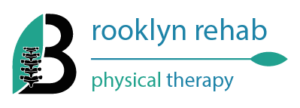Will physical therapy help a torn rotator cuff?
Physical therapy can help with a torn rotator cuff by improving strength, flexibility, and range of motion in the shoulder, and providing pain management techniques and posture education.

A torn rotator cuff is a common injury that can cause pain and limited mobility in the shoulder. Physical therapy is often recommended as a conservative treatment option for individuals with a torn rotator cuff. Physical therapy can help relieve pain, improve mobility and function, and prevent future injury.
How Physical Therapy Can Help with a Torn Rotator Cuff
Physical therapy can help individuals with a torn rotator cuff by designing a treatment plan that is tailored to their specific needs and symptoms. Physical therapy can help improve strength, flexibility, and range of motion in the shoulder, which can help relieve pain and improve function.
Here are some ways physical therapy can help with a torn rotator cuff:
Exercise Therapy
Physical therapy exercises can help improve strength and flexibility in the shoulder. Exercises may include stretches, range-of-motion exercises, and specific exercises to target the rotator cuff muscles.
Manual Therapy
Manual therapy techniques, such as massage, mobilization, and manipulation, can help relieve muscle tension and improve joint mobility in the shoulder. A physical therapist can use these techniques to help reduce pain and inflammation and improve blood flow to the area.
Posture Education
Poor posture can contribute to a torn rotator cuff and aggravate symptoms. A physical therapist can provide education on proper posture and body mechanics to help reduce the pressure on the shoulder joint and prevent future injury.
Pain Management Techniques
A physical therapist can use a range of pain management techniques, such as ice or heat therapy, electrical stimulation, or ultrasound, to help reduce pain and inflammation around the affected area.
Home Exercise Programs
Physical therapists can provide individuals with a home exercise program that is tailored to their specific needs and symptoms. This can help individuals continue their rehabilitation and maintain their progress outside of physical therapy sessions.
